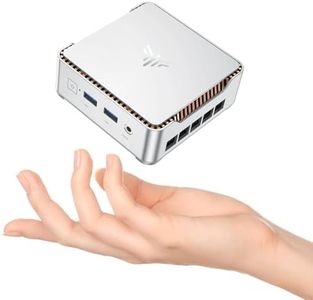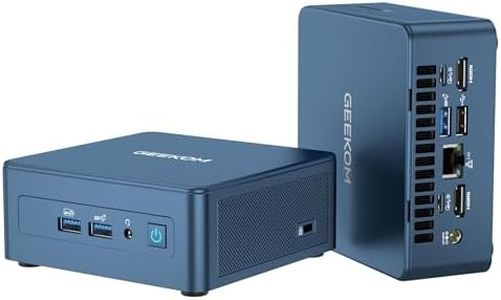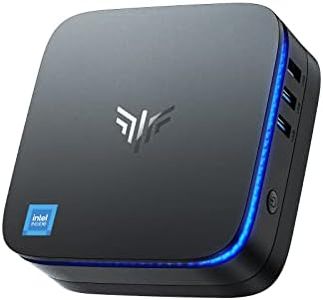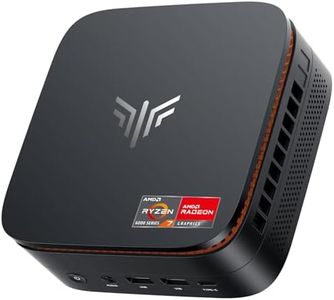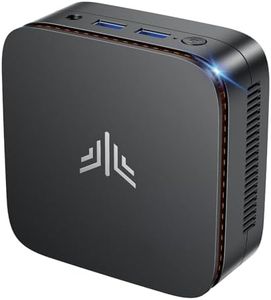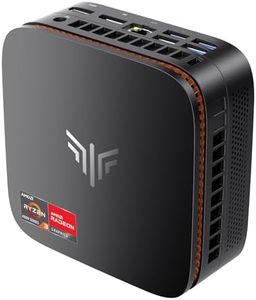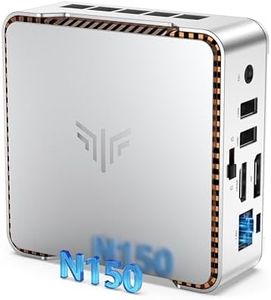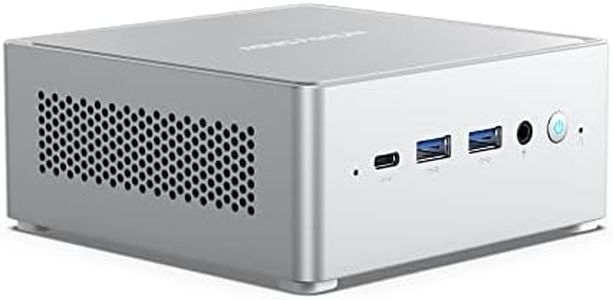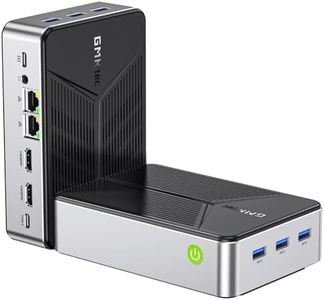We Use CookiesWe use cookies to enhance the security, performance,
functionality and for analytical and promotional activities. By continuing to browse this site you
are agreeing to our privacy policy
10 Best Mini Computers
From leading brands and best sellers available on the web.Buying Guide for the Best Mini Computers
When shopping for a mini-computer, it's important to first think about what you want to use it for. Mini-computers are great because they offer computing power in a small, portable package and can be used for many tasks like web browsing, office work, media streaming, or even lightweight gaming. To find the best fit, consider your main needs: do you want something for basic tasks, or do you need more power for more demanding applications? Once you understand your goals, the key specifications below will help you make an informed decision and feel confident in your choice.Processor (CPU)The processor, or CPU, is the brain of the mini-computer and determines how quickly and efficiently it can run programs. CPUs range from entry-level (which handle web browsing and basic office tasks) to high-performance versions made for more complex work like photo editing or software development. If you just need something for internet, emails, and light apps, a base-level CPU will do. If you plan to multitask, run heavier software, or need a snappy experience, choose a mid-range or higher CPU. Always consider your most demanding common task as a guide.
Memory (RAM)RAM is a type of short-term memory that helps your mini-computer run multiple applications at once smoothly. Lower amounts (like 4GB) can be enough for single tasks like browsing or document editing, while 8GB or more is better for multitasking or using heavier applications. For smooth performance with multiple apps open, aim for more RAM. Think about how many browser tabs or apps you use simultaneously to determine how much memory you need.
StorageStorage refers to how much data—like files, photos, and programs—your mini-computer can keep. There are different types, but most mini-computers use solid-state drives (SSD) for faster performance. Smaller capacities (64GB-128GB) work for basic uses and storing a few files, while 256GB or more is useful if you like keeping lots of media, documents, or programs on hand. Consider the types and sizes of files you work with often to judge how much storage fits your needs.
Ports and ConnectivityPorts are the physical connections (like USB, HDMI, audio jacks) that let you plug in things like monitors, keyboards, and storage drives. Connectivity also includes Wi-Fi and Bluetooth. Some mini-computers have just a few ports, while others offer more variety. If you need to connect multiple monitors or specific accessories, check the types and number of ports. For wireless features, ensure you have the right standards (Wi-Fi 5, Wi-Fi 6, etc.) if you require fast wireless networking.
Graphics (GPU) CapabilityThe graphics processing unit handles images, videos, and sometimes games. Many mini-computers use basic built-in graphics, which are fine for web surfing and video streaming. If you want to play basic games, watch high-resolution videos, or use creative software, look for mini-computers with better integrated graphics or a dedicated graphics chip. Your choice should depend on whether visual performance is important for your main tasks.
Size and Form FactorMini-computers come in different shapes and sizes, from stick PCs that plug directly into an HDMI port, to small boxes that sit on your desk. Smaller models are more portable but might have fewer ports or lower performance, while slightly larger ones can offer more features. If you value portability or want to hide the computer behind a monitor, go as small as possible. If expandability and easy access to connections matter, look for a bigger size.
Cooling and NoiseBecause mini-computers are compact, they sometimes get warm and need built-in cooling. Some use fans, which can make noise, while others are fanless and silent. If you’ll use the mini-computer in a quiet environment (like a bedroom or office), consider a fanless model for silence. If you run intensive tasks, a model with effective cooling ensures reliable performance.
